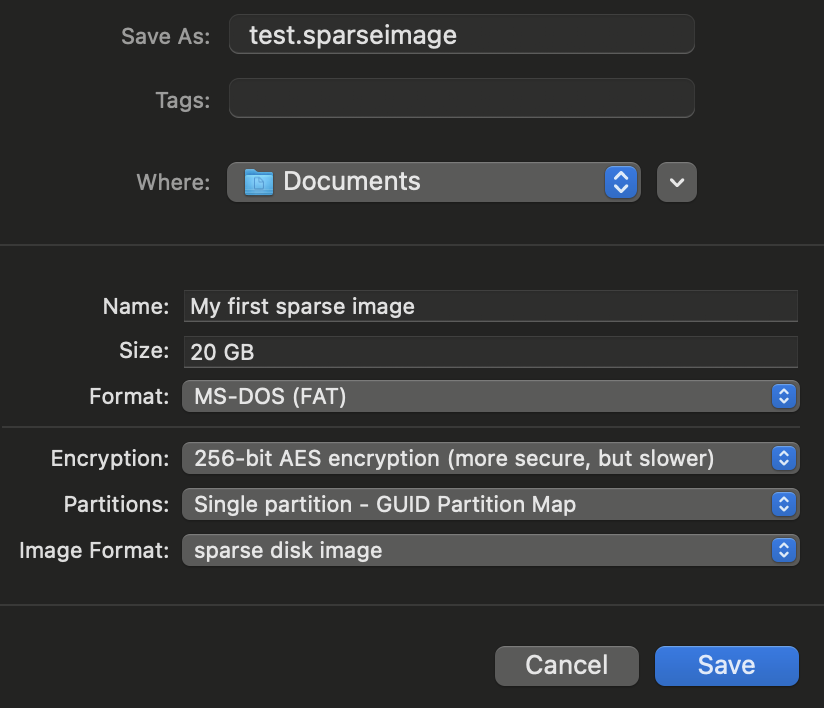Sparse Image¶
Version 4.3.2 introduces support for encrypted Apple sparse disk images. The main advantage of sparse images is that the diskspace used is not determined by the size (capacity) of the disk image (as with most other disk images) but by the size of the files contained in the disk image. The consumed diskspace grows dynamically when you add files to the disk image.
More information on this disk layout is available here.
Important: please note the subtle difference between sparse bundle disk images and sparse disk images. The former are documented here. Sparse disk images are self contained in a single file, whereas sparse bundle disk images are, like the name implies, bundles being a directory containing multiple sub-files.
UDSP vs. ASIF¶
Before macOS 26, Sparse Image referred to the UDSP format, which is the format supported by Disk Decipher.
In macOS 26, Apple introduced the Apple Sparse Image Format (ASIF), a new format carrying the same 'Sparse Image' name. Currently, Disk Decipher does not support the ASIF format. To add support for ASIF, we need the binary specification of this format (how data is stored inside the ASIF file).
If you have more information on ASIF, please let me know.
Limitation¶
Sparse disk image support is currently read-only.
Please upvote this feature request if you need write support.
Create¶
You can easily create a new sparse disk image on macOS by using Disk Utility. Just select File -> New Image -> Blank Image and use settings like

Or using a command like this in Terminal